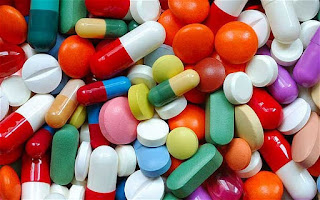Amphotercin
Trade name: Amphocin, Fungizone
Class: Antibiotic,
antifungal
Pregnancy: (Category B)
Action: amphotericin associates
with ergosterol, a membrane chemical of fungi, forming a pore that leads to K+
leakage and fungal cell death Uses:
Antifungal infection
Dose : by
mouth, intestinal candidiasis, 100–200 mg every 6 hours; Infant
and child, 100 mg 4 times daily
Prophylaxis Neonate 100 mg once daily
By intravenous infusion, systemic fungal infections,
initial test dose of 1 mg over 20–30 minutes then 250 micrograms/kg daily,
gradually increased if tolerated to 1 mg/kg daily; max. (severe infection) 1.5
mg/kg daily or on alternate days
Contraindications:
Allergic reaction to amphotericin
Side effects:
§ Burning, itching, redness, or other sign of irritation not
present before use of this medicine, Skin rash, Dryness of skin.
§ Nausea, vomiting, diarrhea, melena, abd. Cramps.
§ Fever, headache, thrombophlebitis, bone marrow depression,
pancytopnea. Anaphylaxis.
Nursing considerations:
• The drug is toxic and should be used only for patients under
close medical supervision with a relatively certain diagnosis of deep mycotic
infections.
• I.V. adm. usually reserved for life threatening diseases because
it is toxic.
• Treatment should be continued for at least 48 hr after clinical
cure has been achieved to prevent relapse.



